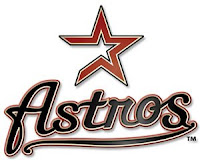 According to The New York Daily News, Selena Roberts’ upcoming book, A-Rod, will add to the speculation surrounding Alex Rodriguez and his suspected use of PED’s. Besides being characterized as a needy personality and having his ego stroked constantly, characterizations that were confirmed in Joe Torre’s book, The Yankee Years, Roberts reports that A-Rod was using back in high school and with the Yankees. Previously, A-Rod has admitted to using PED’s, but only prior to joining the Yankees.
According to The New York Daily News, Selena Roberts’ upcoming book, A-Rod, will add to the speculation surrounding Alex Rodriguez and his suspected use of PED’s. Besides being characterized as a needy personality and having his ego stroked constantly, characterizations that were confirmed in Joe Torre’s book, The Yankee Years, Roberts reports that A-Rod was using back in high school and with the Yankees. Previously, A-Rod has admitted to using PED’s, but only prior to joining the Yankees.The high school allegation comes from a former teammate. The teammate also said that the coach knew A-Rod was using. The coach denied the allegation. So much for the “baseball code:” what happens in the locker room stays in the locker room. This former teammate might have an ax to grind or might simply be jealous…or he could be telling the truth. We’ll need to wait until the book comes out to form an objective opinion on the validity of this information.
The Yankee allegation is a bombshell since his pr people determined that it’s best to make it appear that his NY legacy and tenure has been clean when he apologized in February. Allegedly, that is not the case. The Yankee information, like the high school allegation, also comes from unnamed sources. Two unnamed teammates based their opinions based on visual side effects. The report does not say what those side effects were. Also according to the report, another unnamed major leaguer says he saw A-Rod and former Yankee pitcher Kevin Brown with HGH back in 2004.
Now I’m intrigued; anyone suffering from back acne will now accused of using PED’s. Previously, reporters didn’t ask athletes what might have caused that skin condition or other visual side effects. Now, there might be a legitimate reason to start and be objective rather than be the athlete’s friend.














